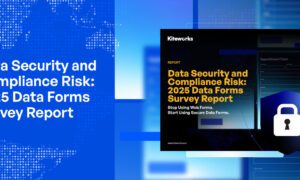In a world where our digital lives are intricately woven into every aspect of our daily routines, the threat of ransomware looms larger than ever. Imagine waking up to find your computer frozen, your files locked away, and an ominous message demanding payment for their release—it’s a nightmare that has become all too real for millions. But don’t let fear paralyze you! By arming yourself with the right knowledge and strategies, you can fortify your personal devices against these insidious attacks. In this blog post, we’ll explore practical steps you can take to safeguard your cherished data and ensure that no cybercriminal holds it hostage. Say goodbye to vulnerability and hello to peace of mind as we dive into the essential tips on preventing ransomware attacks!
Introduction to Ransomware Attacks
Ransomware attacks are lurking around every digital corner, ready to pounce on unsuspecting users. These malicious threats can lock you out of your own files and demand a hefty ransom for their return. If you’ve ever worried about losing precious photos or important documents, you’re not alone. With the rise in remote work and increased reliance on personal devices, understanding how to prevent ransomware attacks has never been more critical.
Imagine waking up one day to find that your computer is frozen, displaying a sinister message demanding payment in exchange for your data. It’s a nightmare scenario that can happen to anyone—and at any time. But fear not; by taking proactive measures, you can shield yourself from these cybercriminals.
In this blog post, we’ll explore the risks associated with ransomware and provide actionable steps you can take to protect your personal devices from such attacks. Let’s dive into the world of cybersecurity together!
Understanding the Risks and Consequences of Ransomware Attacks on Personal Devices
Ransomware attacks pose significant threats to personal devices, often leaving victims vulnerable and unprepared. When a device is infected, files can become encrypted, rendering them inaccessible without a ransom payment. This loss of important data can be devastating.
The consequences extend beyond financial losses. Victims may face emotional distress from losing cherished photos or critical work documents. Trust in technology diminishes as users grapple with the fear of another attack.
Moreover, ransomware doesn’t just affect individual users; it can compromise entire networks if not contained quickly. Sensitive personal information may also be at risk of being stolen and exploited by cybercriminals.
Understanding these risks emphasizes the importance of proactive measures against such malicious attacks. Awareness is the first line of defense in protecting your digital life.
Steps to Prevent Ransomware Attacks
Regular software and security updates are essential. Software developers frequently release patches to address vulnerabilities. Ignoring these updates can leave your devices exposed.
Installing antivirus and anti-malware programs is another critical step. These tools detect and block ransomware before it has a chance to infiltrate your system. Make sure they are set to update automatically.
Backing up your data is non-negotiable. Use external hard drives or cloud services for backups, ensuring you have access to your files if an attack occurs.
Educating yourself and your family about suspicious links and emails can also prevent attacks. Phishing attempts often trick users into clicking malicious attachments or links, so awareness is key in avoiding these traps.
Regular Software and Security Updates
Keeping your software and security systems up to date is crucial in the fight against ransomware. Developers frequently release updates that patch vulnerabilities. These flaws can be gold mines for cybercriminals.
When you ignore updates, you leave doors wide open for attacks. Ransomware thrives on outdated software, exploiting weaknesses that have already been identified and fixed by developers.
Enable automatic updates whenever possible. This ensures you’re always running the latest version without having to think about it actively.
Don’t forget about all devices—phones, tablets, and even smart appliances need regular attention too. Each device connected to your network represents a potential entry point for attackers.
Being proactive can significantly reduce your risk of falling victim to these malicious programs. Stay ahead of threats by making timely updates a priority in your digital routine.
Installing Antivirus and Anti-Malware Programs
Installing antivirus and anti-malware software is a crucial step in safeguarding your personal devices against ransomware attacks. These programs act as a first line of defense, detecting and neutralizing threats before they can cause damage.
Choose reliable software from reputable vendors with good reviews. Look for features like real-time scanning, automatic updates, and strong malware detection rates. Some programs even offer advanced protection mechanisms that analyze behaviors to catch suspicious activity.
Once installed, regularly check for updates. Cybercriminals continuously evolve their tactics; out-of-date software can leave you vulnerable. Enable automatic updates if available to ensure you’re always protected.
Don’t forget about periodic system scans. A quick scan might miss hidden threats that could be lurking in the background waiting for the right moment to strike. By performing thorough checks routinely, you enhance your security posture significantly while keeping potential intruders at bay.
Backing Up Your Data
Backing up your data is one of the most critical steps in safeguarding against ransomware attacks. Imagine losing precious photos, important documents, or vital work files due to an unexpected attack. Regular backups can save you from that nightmare.
Consider using both cloud storage and external hard drives for redundancy. Cloud solutions like Google Drive or Dropbox offer easy access from anywhere, while physical drives provide a reliable offline option.
Make it a habit to back up your data regularly—weekly or even daily if necessary. Set reminders on your calendar so you don’t forget this essential task.
Also, ensure that your backup solution is secure. Encrypt sensitive files and use strong passwords to protect them from unauthorized access. The more layers of security you add, the better protected you’ll be against potential threats lurking online.
Educating Yourself and Your Family About Suspicious Links and Emails
Understanding the dangers of suspicious links and emails is crucial in today’s digital age. Cybercriminals often use deceptive tactics to trick users into clicking on malicious content.
Start by educating yourself about common phishing techniques. These can include poorly written messages or urgent requests for personal information. Awareness of these signs can help you avoid falling victim to their schemes.
Talk to your family members, especially children and older adults who may be less tech-savvy. Encourage them not to open unexpected emails or click on unknown links without verifying the sender’s authenticity.
Set up a family discussion around cybersecurity practices. Create scenarios where they must identify phishing attempts or potential scams. This proactive approach reinforces learning through real-life examples, making it easier for everyone to recognize threats when they arise.
Regularly update your discussions as new threats emerge; staying informed is key in this ever-evolving landscape of cyber risks.
Additional Measures for High-Risk Devices, such as Smartphones and IoT Devices
High-risk devices, like smartphones and Internet of Things (IoT) gadgets, require special attention. They often connect to various networks, making them prime targets for ransomware attacks.
Start by enabling two-factor authentication wherever possible. This adds an extra layer of security that most attackers find challenging to bypass.
Regularly review the apps installed on your smartphone or IoT device. Remove anything unnecessary or unfamiliar. Malicious apps can be disguised as harmless tools.
Keep an eye on firmware updates for your devices. Manufacturers frequently release patches that address vulnerabilities exploited by cybercriminals.
Consider using a Virtual Private Network (VPN) when connecting through public Wi-Fi. This helps encrypt your data and shields it from prying eyes in crowded hotspots.
Lastly, use strong, unique passwords for each device and account linked to them. A password manager can help keep track of these securely while ensuring they remain complex enough to resist hacking attempts.
What to Do if You Fall Victim to a Ransomware Attack?
Discovering that you’ve fallen victim to a ransomware attack can be overwhelming. First, disconnect your device from the internet immediately. This action prevents further data loss and stops the malware from communicating with its source.
Next, assess the situation. Identify what files are encrypted and determine if any backups are available. If you have recent backups stored safely offline or in the cloud, restoring your data may be possible without paying ransom.
Do not pay the ransom unless absolutely necessary, as it doesn’t guarantee recovery of your files and encourages future attacks. Instead, report the incident to local law enforcement and cybersecurity authorities.
Seek professional help if needed; experts can guide you through recovery steps or help remove malicious software completely. Document everything related to the attack for potential investigation purposes while staying calm and focused on regaining control over your device.
The Importance of Staying Vigilant in the Age of Cybersecurity Threats
Staying vigilant against ransomware attacks is crucial in today’s digital landscape. Cyber threats are evolving, and so must our defenses. With the right knowledge and proactive measures, you can significantly reduce your risk of falling victim to these malicious attacks.
Always prioritize regular software updates and familiarize yourself with effective antivirus solutions that provide robust protection. Remember to back up your data consistently—this small step can save you from major headaches down the line.
Education plays a vital role as well; by teaching yourself and your family about phishing scams or suspicious links, you’re building a first line of defense against potential threats. High-risk devices like smartphones require additional attention too, as they often hold valuable personal information.
If you ever find yourself caught in the clutches of ransomware, knowing what steps to take can empower you to act swiftly and minimize damage. Remaining informed empowers every user in this interconnected world we live in, fostering not only individual safety but also community resilience against cybercrime.
Ultimately, maintaining awareness about cybersecurity threats will help ensure that your personal devices remain secure. Protecting your digital life requires ongoing effort but remember: diligence today creates peace of mind for tomorrow.
Use Private Proxies for Enhanced Security
In addition to traditional cybersecurity measures, private proxies can be an effective tool in protecting your personal devices from ransomware attacks. By using a private proxy, you can mask your IP address, which helps prevent malicious actors from targeting your device based on its location or behavior.
Private proxies work by routing your internet traffic through a dedicated server, making it more difficult for hackers to track and target your device. Rotating proxies, in particular, are a great option for constantly changing your IP address, ensuring your device remains anonymous and harder to attack.
One reputable provider of private proxies is Proxy-Cheap. They offer affordable rotating private proxies, perfect for improving your online security. By integrating Proxy-Cheap’s proxies into your browsing habits, you can add an extra layer of protection against ransomware and other forms of cyberattack.
Incorporating private proxies with your usual security tools, such as firewalls and VPNs, ensures that you are well-equipped to defend against ransomware attacks.
Conclusion
In conclusion, ransomware attacks pose a serious threat to personal devices and it is important to take preventative measures. By following these tips such as updating software regularly, being cautious of suspicious emails and websites, backing up data, and using security tools like firewalls and antivirus software, you can greatly reduce the risk of falling victim to a ransomware attack. It is crucial for individuals to be proactive in securing their personal devices in order to protect their sensitive information from cybercriminals. Stay vigilant and implement these preventive strategies now before it’s too late. Your device’s security depends on it.



































